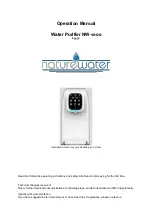
TFP340
Page 4 of 6
Installation
TYCO Series ELO-231 11.2K Stan-
dard Response, Standard Coverage
Upright and Pendent Sprinklers must
be installed in accordance with this
section.
A leak-tight 3/4 in. NPT sprinkler joint
should be obtained by applying a min-
imum-to-maximum torque of 10 to
20 lb-ft (13,4 to 26,8 N
∙
m). A leak-
tight 1/2 in. NPT sprinkler joint should
be obtained by applying a minimum-
to-maximum torque of 7 to 14 lb-ft
(9,5 to 19,0 N
∙
m). Higher levels of
torque can distort the sprinkler inlet
with consequent leakage or impairment
of the sprinkler.
Do not attempt to make up for insuf-
ficient adjustment in the escutcheon
plate by under- or over-tightening the
sprinkler. Re-adjust the position of the
sprinkler fitting to suit.
The Series ELO-231 Upright and
Pendent Sprinklers must be installed
in accordance with the following
instructions:
Step 1.
Pendent sprinklers are to be
installed in the pendent position, and
upright sprinklers are to be installed in
the upright position.
Step 2.
With pipe thread sealant
applied to the pipe threads, hand
tighten the sprinkler into the sprinkler
fitting.
Step 3.
Tighten the sprinkler into the
sprinkler fitting using only the W-Type
3 Sprinkler Wrench (Ref. Figure 2),
except that an 8 in. or 10 in. adjust-
able Crescent wrench is to be used
for wax coated sprinklers. With refer-
ence to Figure 1, the W-Type 3 Sprin-
kler Wrench or the adjustable wrench,
as applicable, is to be applied to the
wrench flats.
When installing wax-coated sprinklers
with the adjustable wrench, additional
care needs to be exercised to prevent
damage to the wax coating on the
sprinkler wrench flats or frame arms
and, consequently, exposure of bare
metal to the corrosive environment.
The jaws of the wrench should be
opened sufficiently wide to pass over
the wrench flats without damaging the
wax coating. Before wrench-tightening
the sprinkler, the jaws of the wrench are
to be adjusted to just contact the sprin-
kler wrench flats. After wrench-tight-
ening the sprinkler, loosen the wrench
jaws before removing the wrench.
After installation, the sprinkler
wrench flats and frame arms must
be inspected and the wax coating
re-touched (repaired) whenever the
coating has been damaged and bare
metal is exposed. The wax coating on
the wrench flats can be retouched by
gently applying a heated 1/8 in. diam-
eter steel rod to the areas of wax that
have been damaged, to smooth it
back over areas where bare metal is
exposed.
Note:
Only retouching of the wax coating
applied to the wrench flats and frame
arms is permitted, and the retouching
is to be performed only at the time of
the initial sprinkler installation.
The steel rod should be heated only
to the point at which it can begin to
melt the wax, and appropriate precau-
tions need to be taken, when handling
the heated rod, in order to prevent the
installer from being burned.
If attempts to retouch the wax coating
with complete coverage are unsuc-
cessful, additional wax can be ordered
in the form of a wax stick (the end of
which is color coded). Only the correct
color-coded wax is to be used, and
retouching of wrench flats and frame
arms is only permitted at the time
of initial sprinkler installation. With
the steel rod heated as previously
described, touch the rod to the area
requiring additional wax with the rod
angled downward, and then touch
the wax stick to the rod approximately
1/2 in. away from the area requiring
retouching. The wax will melt and run
down onto the sprinkler.
Care and
Maintenance
TYCO Series ELO-231 11.2K Standard
Response, Standard Coverage Upright
and Pendent Sprinklers must be main-
tained and serviced in accordance with
this section.
Before closing a fire protection system
control valve for maintenance work on
the fire protection system that it con-
trols, permission to shut down the
affected fire protection system must
be obtained from the proper authorities
and all personnel who may be affected
by this action must be notified.
Sprinklers that are found to be leaking
or exhibiting visible signs of corrosion
must be replaced.
Automatic sprinklers must never be
painted, plated, coated or otherwise
altered after leaving the factory. Modi-
fied or over-heated sprinklers must be
replaced.
Care must be exercised to avoid
damage to the sprinklers before,
during, and after installation. Sprin-
klers damaged by dropping, striking,
wrench twist/slippage, or the like, must
be replaced.
Frequent visual inspections are rec-
ommended to be initially performed
for corrosion resistant sprinklers, after
the installation has been completed, to
verify the long term potential integrity
of the sprinkler coatings. Thereafter,
annual inspections per NFPA 25 should
suffice; however, instead of inspecting
from the floor level, a random sampling
of close-up visual inspections should
be made, so as to better determine the
exact sprinkler condition and the long
term integrity of the corrosion resistant
coating, as it may be affected by the
corrosive conditions present.
The owner is responsible for the
inspection, testing, and maintenance of
their fire protection system and devices
in compliance with this document, as
well as with the applicable standards
of the National Fire Protection Associ-
ation, such as NFPA 25, in addition to
the standards of any other authorities
having jurisdiction. Contact the install-
ing contractor or product manufacturer
with any questions.
It is recommended that automatic
sprinkler systems be inspected, tested,
and maintained by a qualified Inspec-
tion Service in accordance with local
requirements and/or national codes.
"FITTING SIDE"
FITTING
TOWARDS SPRINKLER
RECESS
WRENCH
(END "A")
FIGURE 2
W-TYPE 3
SPRINKLER WRENCH
























